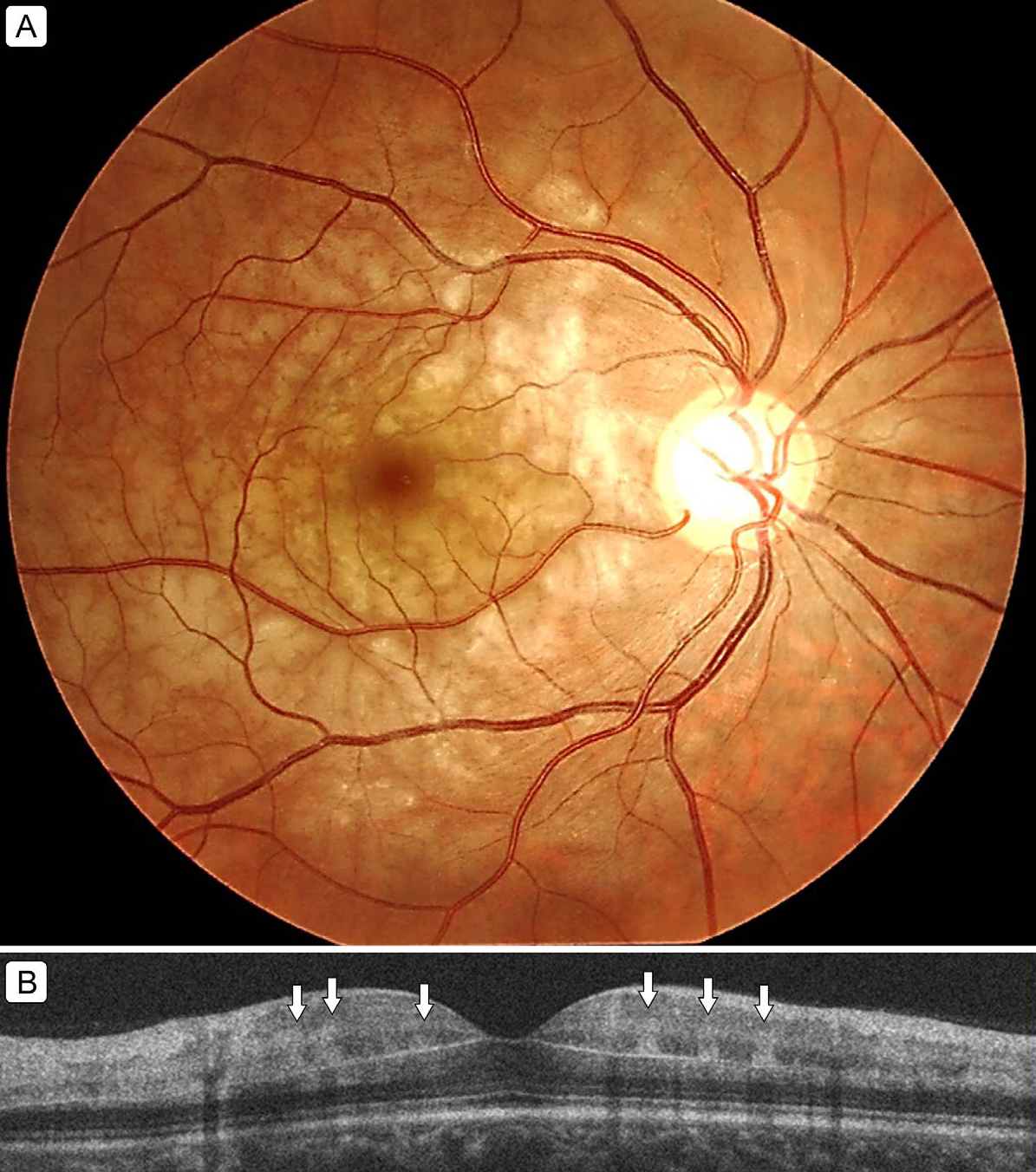 |
| A complete stroke evaluation might be necessary in patients who present with PAMM to prevent a cerebrovascular event or progression to total blindness. Photo: Makino S. Digital J Ophthalm, Aug. 17, 2022. Click image to enlarge. |
With recent advances in multimodal imaging, there is an increased interest in using spectral domain (SD-OCT) and other modalities to better describe retinal vascular disease prior to the onset of vision loss. Paracentral acute middle maculopathy (PAMM) is an SD-OCT finding characterized by hyper-reflective changes within the inner nuclear layer and inner plexiform layer. Though not traditionally considered a precursor event to central retinal artery occlusion (CRAO), PAMM is associated with risk factors that are nearly identical to those of retinal artery occlusion, such as age, hypertension and diabetes. A recently published case report detailed a patient who developed acute-onset central scotoma with PAMM and, five days later, subsequently progressed to complete CRAO.
A 63-year-old male presented with a paracentral scotoma that had begun several days ago. His past medical history consisted of a third-degree atrioventricular heart block requiring a pacemaker. Giant cell arteritis was unlikely given the patient’s labs, demographics and review of systems. SD-OCT revealed a characteristic hyperreflective band in the inner nuclear layer consistent with PAMM in his left eye. Fluorescein angiography was obtained and was unremarkable. Five days later, the patient had no light perception in the left eye. SD-OCT showed a diffuse inner retinal hyperreflectivity consistent with CRAO.
This case is rather unique in that none of the clinical findings of retinal artery occlusion—retinal whitening, arterial attenuation or delayed filling on angiography—were present on the initial exam.
“The PAMM lesion described here likely resulted from a separate thromboembolic event which spontaneously resolved so that the area of retinal infarction was limited to that most susceptible to watershed ischemia,” the authors wrote in their paper. “This is in contrast to middle maculopathy in the setting of incomplete CRAO where ischemic lesions appear more diffusely throughout the macula in either a globular or perivenular pattern.” Future investigation is needed to better establish the risk correlation between these two events.
“For now, it is clear that PAMM may represent a precursor event heralding the onset of catastrophic vision loss,” the authors concluded in their paper. “As such, it reinforces the critical importance of an urgent diagnostic workup to identify a thromboembolic source and, in the event of a negative workup, to consider antiplatelet or even thrombolytic therapy if suspicion is high.”
Louie E, Tang A, King B. Paracentral acute middle maculopathy presenting as a sign of impending central retinal artery occlusion: a case report. BMC Ophthalmol. June 13, 2023. [Epub ahead of print]. |

